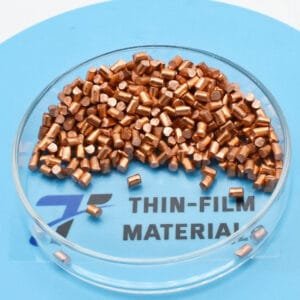Holmium Evaporation Materials Description
Holmium metal, a soft and malleable rare earth element, is known for its corrosion resistance and stability in dry air at standard temperature and pressure. However, it readily oxidizes in moist air. Holmium has the highest magnetic moment of all naturally occurring elements and forms highly magnetic compounds when alloyed with yttrium. Under ambient conditions, holmium exhibits paramagnetic properties.
High-purity holmium evaporation materials are vital for achieving superior results in deposition processes, ensuring the production of high-quality deposited films. TFM specializes in manufacturing holmium evaporation materials with purity levels up to 99.95%, supported by stringent quality assurance processes to ensure product reliability.

Holmium Evaporation Materials Specification
| Material Type | Holmium |
| Symbol | Ho |
| Color/Appearance | Silvery White, Metallic |
| Melting Point | 1,474°C |
| Density | 8.8 g/cc |
| Thermal Conductivity | 16 W/m.K |
| Coefficient of Thermal Expansion | 11.2 x 10-6/K |
| Synonyms | Ho Pellets, Ho Pieces, Ho Evaporation Pellet, Holmium Pellets, Holmium Pieces, Holmium Evaporation Pellet |
Holmium Evaporation Materials Application
Holmium evaporation materials are integral in various deposition methods, including those used for semiconductors, Chemical Vapor Deposition (CVD), and Physical Vapor Deposition (PVD). These processes are critical for forming uniform layers in advanced electronics. Additionally, holmium is valuable in the field of optics, where it’s applied for enhancing surface protection, creating decorative coatings, and improving display technology performance.
Holmium Evaporation Materials Packaging
We take great care in handling our holmium evaporation materials, prioritizing proper storage and secure transportation to maintain their pristine quality and prevent any potential damage.


 MSDS File
MSDS File



Reviews
There are no reviews yet.